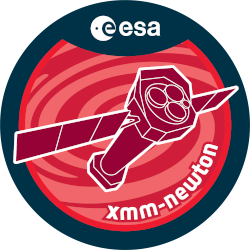

| Proposal ID | 086535 |
| Title | Joint X-ray-tSZ analysis of hot baryons transiting from filaments to clusters |
| Download Data Associated to the proposal | https://nxsa.esac.esa.int/nxsa-sl/servlet/data-action-aio?obsno=0865350101 |
| DOI | https://doi.org/10.57780/esa-lrb6reb |
| Principal Investigator, PI | Dr Alexander Kolodzig |
| Abstract | Structure formation is still ongoing via merging and accretion of gas andgalaxies onto massive clusters. These processes can be best observed in thecluster outskirts. More specifically, filaments between clusters are a uniquelaboratory to study structure formation since they represent a transition zonebetween the virialized, self-gravitating Intercluster medium, and the cooler,less dense warm-hot intergalactic medium filling the cosmic web. Focusing on theideal-configuration of an SZ-selected cluster pair, the present proposal aims atperforming an unprecedented joint X-ray-tSZ analysis of the transition fromfilaments to clusters. With this, we will address key questions such as: whatis the physical state of the hot gas in filaments and how did it accret and heat to form the ICM. |
| Publications |
|
| Instrument | EMOS1, EMOS2, EPN, OM, RGS1, RGS2 |
| Temporal Coverage | 2020-12-27T02:07:22Z/2021-01-04T12:02:20Z |
| Version | 18.02_20200221_1200 |
| Mission Description | The European Space Agencys (ESA) X-ray Multi-Mirror Mission (XMM-Newton) was launched by an Ariane 504 on December 10th 1999. XMM-Newton is ESAs second cornerstone of the Horizon 2000 Science Programme. It carries 3 high throughput X-ray telescopes with an unprecedented effective area, and an optical monitor, the first flown on a X-ray observatory. The large collecting area and ability to make long uninterrupted exposures provide highly sensitive observations. Since Earths atmosphere blocks out all X-rays, only a telescope in space can detect and study celestial X-ray sources. The XMM-Newton mission is helping scientists to solve a number of cosmic mysteries, ranging from the enigmatic black holes to the origins of the Universe itself. Observing time on XMM-Newton is being made available to the scientific community, applying for observational periods on a competitive basis. |
| Creator Contact | https://www.cosmos.esa.int/web/xmm-newton/xmm-newton-helpdesk |
| Date Published | 2022-02-06T00:00:00Z |
| Last Update | 2025-08-04 |
| Keywords | "transition zone", "hot baryons transiting", "structure formation", "xray tsz analysis", "cluster pair", "hot gas", "cluster outskirts", "via merging", "massive clusters", "cosmic web", "ideal configuration" |
| Publisher And Registrant | European Space Agency |
| Credit Guidelines | European Space Agency, Dr Alexander Kolodzig, 2022, 'Joint X-ray-tSZ analysis of hot baryons transiting from filaments to clusters', 18.02_20200221_1200, European Space Agency, https://doi.org/10.57780/esa-lrb6reb |